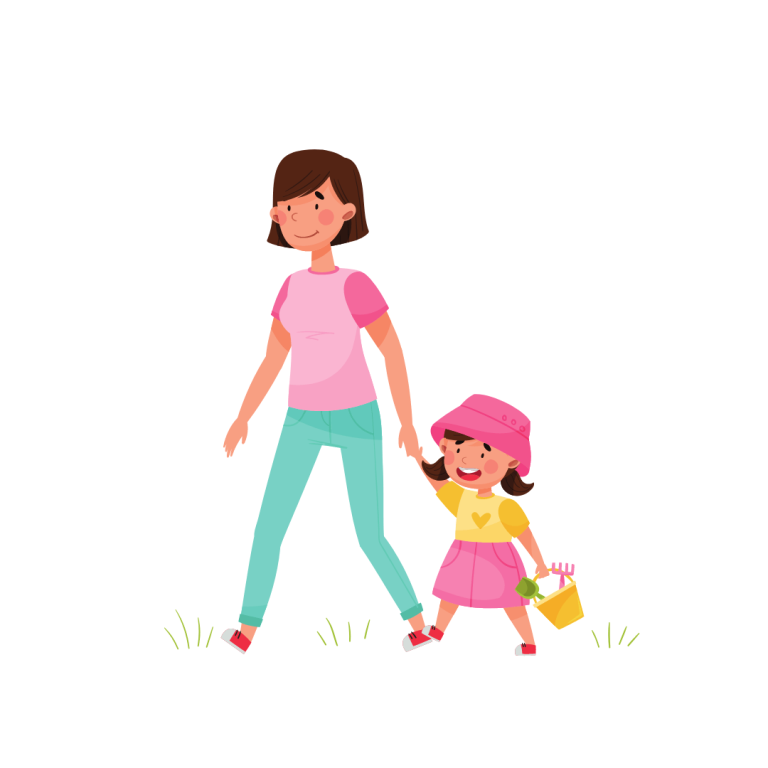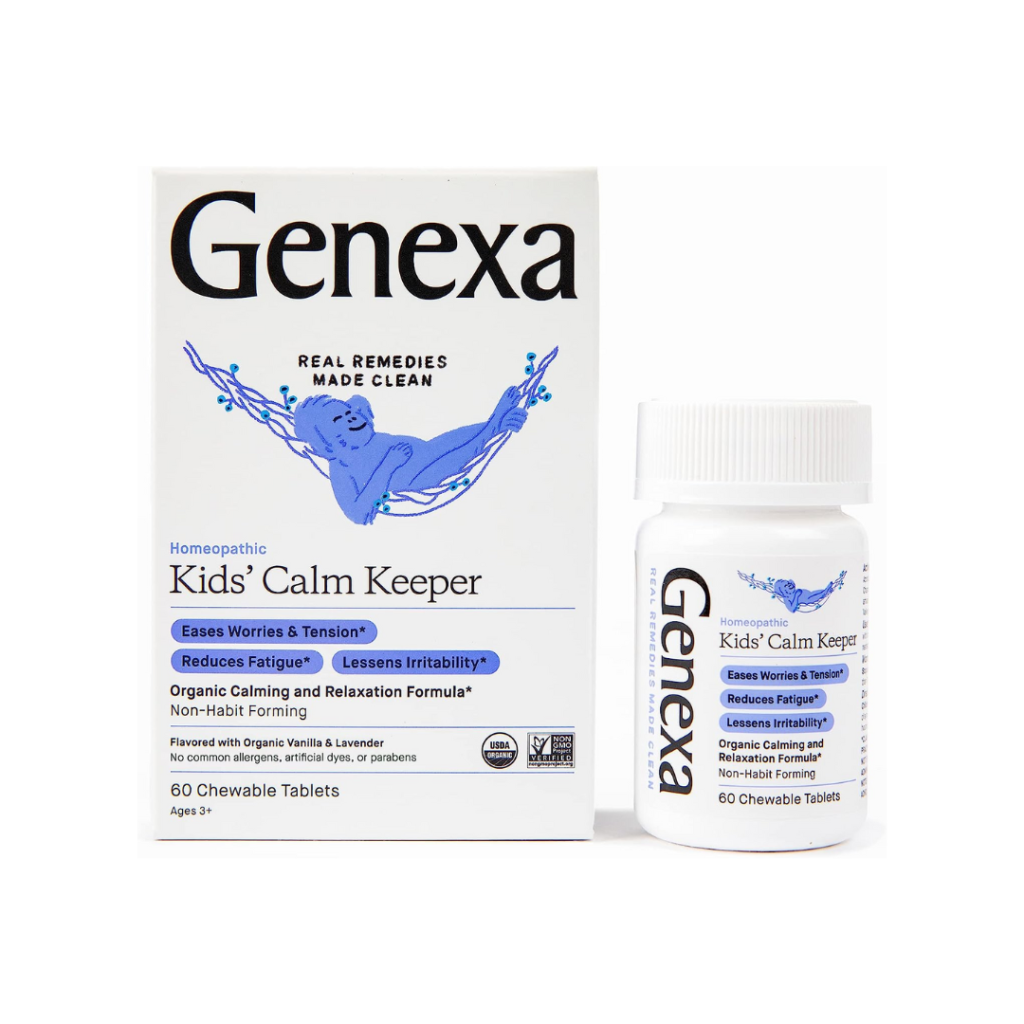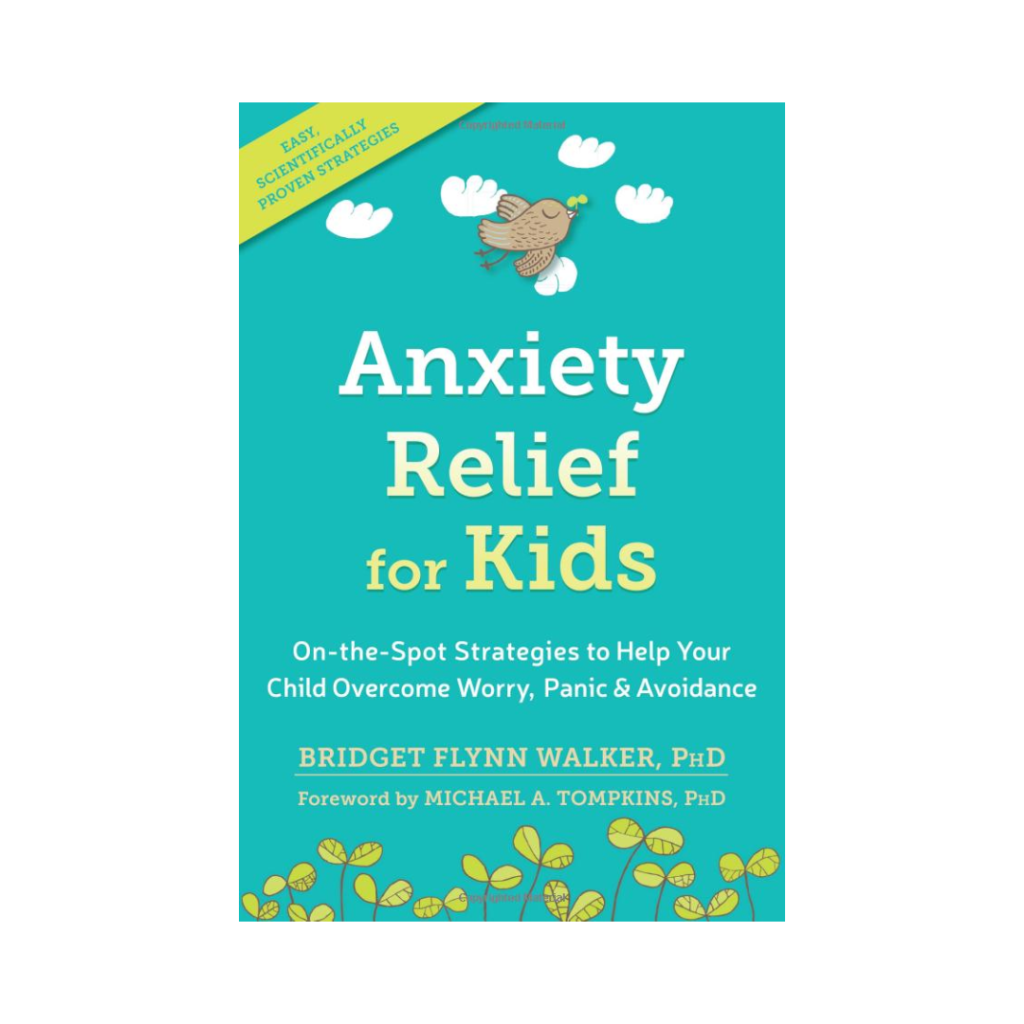Anxiety hurts our ability to live peaceful and fulfilling lives!
When it shows up in our kids we feel helpless in supporting them. However, there are ways to dissipate mental energy, calm body alarm and deal with anger or tantrums fueled by anxious energy.
This guide lists great resources and people to help you on your journey to better mental health. Let's dive in...

What anxiety in kids looks like:
Thumping heart, rapid breathing, sweating, tense muscles, nausea, and dread are familiar symptoms of anxiety that accompany a “fight, flight, or freeze” reaction triggered by real or imagined threats, like a snarling dog or new social experience. Anxious children may be clingy, startle easily, cry or have tantrums, sleep poorly, and have headaches or stomachaches.
Anxiety may set deep roots due to a blend of:
- biological factors, such as genes and brain wiring
- psychological factors, such as temperament and coping strategies
- environmental factors, such as anxious parenting or troubling early childhood experiences and environment.
Sometimes, anxiety is a side effect of medicine. Ask your doctor about this possibility.

Ways parents can support Anxious kids:
Personalize and externalize: Ask your child to give anxiety a name. Your child can draw pictures of anxiety, too. Then, help your child acknowledge anxiety when it rears up: ‘Is that spiky-toothed, purple Bobo telling you no one wants to play with you?’ Labeling and distancing anxiety can help your child learn to be the boss of it.
Preview anxiety-provoking situations. Consider meeting camp counselors or touring new places ahead of time.
Model confidence: Children are emotional Geiger counters. They register anxiety radiating from parents. Try to be mindful of what you model through words and body language. Work on tempering overanxious reactions when appropriate.
Narrate their world: “Children are coding the world. Particularly through early childhood their brains are just sponges, taking everything in,” says Dr. Potter. “We can help them with the narrative they’re constructing: ‘Is the world a safe place or a dangerous place where I have to be on guard all the time?'”
Allow distress: Avoiding distressing situations invites anxiety to ease temporarily, only to pop up elsewhere. Rational explanations won’t work, either. The whirring emotional center of the brain known as the limbic system requires time and tools to calm down enough to let the thinking (cognitive) center of the brain come back online. Instead, try distress tolerance tools: one child might splash her face with cold water, another might charge up and down stairs to blow off anxious energy, or tense and relax her muscles, or distract herself by looking around to find every color in the rainbow.
Practice exposure: Gradual exposure helps rewire an anxious brain and shows a child he can survive anxious moments. Let’s say your child is anxious about talking in public, ducking his head and squirming if addressed. Pick a pleasant, slow-paced restaurant for a fun weekly date. Then coach your child to take charge of ordering foods he likes in small steps. At first, he might whisper the order to you and you’ll relay it to the waitress. Next, he might order just his drink or dessert, and finally a full meal as distress tolerance and confidence grows.



What to Avoid Doing:


1. Don’t avoid things just because they make a child anxious – Helping children avoid the things they are afraid of will make them feel better in the short term, but it reinforces the anxiety over the long run.The message a child receives is that they can’t handle this situation and they should continue avoiding it.
2. Express positive — but realistic — expectations – Anxiety is at its core about a difficultly tolerating uncertainty. “When we promise kids that their fear won’t happen, we’re giving them a false sense of certainty, which is not only potentially untrue, it also feeds the anxiety,” Berman adds. “Instead, we want to send the message that they can handle the situation, no matter what happens.”
3. Don’t ask leading questions – Leading questions fuel uncertainty. Open-ended questions help kids to reflect on their own emotional experience, which is an important part of managing anxiety. Anxiety often shows up in some specific situations but not others, so it’s important to not make assumptions about a child’s emotions, but instead let them tap into that understanding and share information about how they feel.
4. Try to keep the anticipatory period short – When we’re afraid of something, the hardest time is before we do it. So if a child is nervous about going to a doctor’s appointment, don’t discuss it until you need to.
You may decide to tell them the night before or the morning of or even a few days before, depending on the child. But the goal is to not give them too much time to ruminate, while also not surprising them. “It can be helpful for kids to feel like they have a little preparation time but not too much.
Helpful Activities:



There are several activities that can be helpful for individuals with Anxiety, as they can help control anxious thoughts and calm body alarm. Some of these activities include:
Cognitive Behavioral Therapy –
Cognitive behavioral therapy (CBT) has become the leading treatment for anxiety, and with good reason. Research indicates that CBT can be an effective treatment for anxiety after as few as 8 sessions, with or without any form of medication. Due to the high prevalence of anxiety disorders (18% of adults in the United States meet criteria for an anxiety disorder over a 1-year period), it’s valuable to have a strong understanding of best practices for its treatment.
CBT works by identifying and addressing how a person’s thoughts and behaviors interact to create anxiety. Therapists work with clients to recognize how negative thought patterns influence a person’s feelings and behaviors.
Body Scanning –
Anxiety that hasn’t been dealt with gets offloaded into the body. That means that future moments of anxiety that don’t have a specific and immediate cause can come from these prior times of avoided stress that are now in the body.
Body scanning is the process of increasing the brain-body connection by focusing on where in the body anxiety is showing up. Then activities like Progressive muscle relaxation (PMR) work to significantly reduce feelings of anxiety. PMR requires the child go through a checklist of muscles that they will purposefully tense and then relax. Using this technique will create a feeling of relaxation, and it will help to teach a client to better recognize when they are experiencing anxiety by recognizing the tension in their muscles. Often relaxation methods will match the way the stress is showing up in the body so it will require specific matching or trial and error.
Breathing Skills –
Deep breathing (also known as diaphragmatic breathing) requires a client to take conscious control of their breathing. They will learn to breathe slowly using their diagram to initiate the body’s relaxation response.
Deep breathing can be valuable in the moment when confronting something anxiety-producing, or in general as a way to reduce overall stress. It will be valuable for your kids to practice deep breathing daily even when they’re feeling fine—the effects can be long-lasting.
Professionals:
Dr. Russell Kennedy
Anxiety expert and Neuropsychologist that specializes in how anxiety shows up in the body. In addition to CBT therapies for Anxiety Dr. Kennedy takes a body approach to look for signals of body alarm (retained anxiety from prior trauma).
Dean Stott
Great for parents! Dean makes the biological origins and experience relatable while focusing on practical ways to combat uncomfortable thought patterns. His focus is on behavior, not thought patterns.
Content Channels:
@anxiety_wellbeing
Daily informative cartoons and great resources.
@thriveanxietysolutions
Non-medicinal solutions + brain education focused on anxiety in women.
@growlittleminds
Evidence-based psychoeducation for parents
@youranxietytoolkit
Teaching heavy IG channel with lots of really great information to learn from
Products for Anxiety

Liquid Motion Bubbler Pens Sensory Toy (3 Pack)
This bubble timer is so satisfying and mesmerizing. It’s a simple way to keep kids entertained, enjoy better focus along and reduce stress and anxiety. It performs just like a regular pen too! These vibrant flair pens are fascinating to watch, but they’re actually high quality pens to use. They’re easy for kids to handle and are perfect back to school supplies!

Mindfulness Breathing Owl - 3 in 1 Device with Night Light & Noise Machine
This 3-in-1 device combines a breathing light, night light, and noise machine all in one sleek design! With just a few minutes of daily use, this breathing tool can help you reduce stress, increase focus, boost productivity, and achieve a deep, restful sleep at night. Promoting mindfulness, it’s the perfect way to improve your overall health and wellness.

Worry Stone for Anxiety for Kids
Chakra worry stone is designed according to the size of the thumb, so it is also called the thumb worry stone. The groove in the middle is very suitable for thumb rubbing to relieve anxiety and it is made to be a supportive tool while meditating or during times of stress. Add this to your child’s backpack or as a great coping tool for their calm down corner.

Relaxation Aid for Children - Homeopathic Remedies
Calm Keeper is a kids calming aid that is physician formulated to ease worries and tension, reduce fatigue, and lessen irritability. This safe, organic formula was created by our Chief Formulating Officer, a medical doctor and homeopathic physician. It features worry-free ingredients: Free of artificial dyes, flavors and preservatives. Certified vegan, gluten free, organic, lactose free, & non-GMO.

Sensory Weighted Stuffed Animals for Kids
Weighted lap elephant at 4 pounds and 25 x 19 inches provides comfort and helps with relaxation and staying calm. Our weighted plush animals can be placed on lap or chest for a soothing experience. This is the only small weighted blanket to have received the prestigious Mom’s Choice Award for excellence

Sensory Compression Blanket / Bed Sheet for Kids
Deep touch pressure therapy promotes the release of oxytocin. Oxytocin is an important neurotransmitter that helps kids feel relaxed, calm and generally happy. This sheet might help kids with Anxiety to feel relaxed so they sleep through the night because of a deep pressure feeling of being hugged or held.

Body Sock, Calming Therapy Blanket
SELF-SOOTHING BEHAVIORAL THERAPY: These sensory tools will help your child calm down, relieving them of anxiety and sensory overload. Its ergonomic design allows for dynamic movement. They won’t get tangled or stuck in them. Children can play, relax, and calm down while wearing these body pods.

Daily Meditation Cards that support Anxiety and Relaxation
This graphic packed mindfulness deck contains 100 cards designed for stress management, anxiety relief, self care, relaxation, calmness, self love, mental fortitude, emotional awareness, & more. Help kids build and practice their own mindfulness routine so coping skills can intervene during regular parts of their anxiety cycle.

Sensory Fidget Stress Relief Toy: Marble Maze Mat
This fidget marble maze toy is another great way to de-stress, focus and develop fine motor skills. A marble mat has been placed between layers of fabric and is pushed around the rows with up and down manner. Very useful for children on the spectrum, hand therapy, seniors with memory and concentration issues.
Books:

Sometimes I'm Anxious: A Child's Guide to Overcoming Anxiety
A practical guide that combines proven cognitive-behavioral therapy methods used by child psychologists in schools with simple activities to help your child overcome anxiety. Perfect for children ages 8 to 12.

What to Do When You Worry Too Much: A Kid's Guide to Overcoming Anxiety
An interactive self help book with Lively metaphors and humorous illustrations make anxiety and strategies easy to understand, while clear how-to steps, prompts to draw, and writing help children to master new skills related to reducing anxiety.

Find Your Calm: A Mindful Approach To Relieve Anxiety And Grow Your Bravery
An accessible book that teaches children how to tap into their sense of safety when anxiety sends a false alarm, so they can find their calm. It includes simple grounding activities and coping tools for them to practice.

Outsmarting Worry (An Older Kid's Guide to Managing Anxiety)
Outsmarting Worry teaches 9-13 year olds and the adults who care about them a specific set of skills that makes it easier to face – and overcome – worries and fears. Smart, practical, proven techniques are presented in language immediately accessible to children with an emphasis on shifting from knowing to doing, from worried to happy and free.

A Little SPOT of Anxiety: A Story About Calming Your Worries
This story addresses how anxiety can affect all ages and how it can show up in all different situations. This visual representation of Anxiety helps a child see when it gets too big and how to shrink it back to a Green PEACEFUL SPOT. The goal of this book is to give children the tools needed to identity what emotion they are feeling and how to properly manage that emotion.

Calm Ninja: A Children’s Book About Calming Your Anxiety
Calm Ninja experiences frustration and anxiety, but then learns how to find inner peace through breathing and practicing the Ninja Yoga Flow.
Children will learn with Calm Ninja how to calm worries and stay peaceful under extreme circumstances. They learn that life IS tough but so are you!

CBT Toolbox for Children and Adolescents
Written by clinicians and teachers with decades of experience working with kids, these practical and easy-to-use therapy tools are vital to teaching children how to cope with and overcome their deepest struggles. Step-by-step, you’ll see how the best strategies from cognitive behavioral therapy are adapted for children.

Anxiety Relief for Kids: On-the-Spot Strategies to Help Your Child Overcome Worry, Panic, and Avoidance
In-the-moment solutions you can easily use to help your child face their fears and worries. Written by a psychologist and expert in childhood anxiety, this easy-to-use guide offers proven-effective (CBT) and exposure skills you can use at home, in social settings, or anywhere anxiety takes hold.

The Whole-Brain Child: 12 Revolutionary Strategies to Nurture Your Child's Developing Mind
Complete with age-appropriate strategies for dealing with day-to-day struggles and illustrations that will help you explain these concepts to your child, The Whole-Brain Child shows you how to cultivate healthy emotional and intellectual development so that your children can lead balanced, meaningful, and connected lives.
